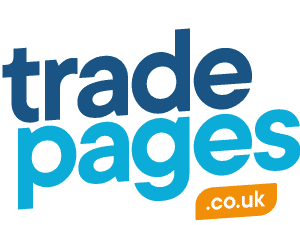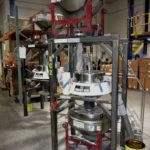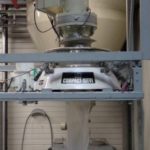Send enquiry to Vibratory sieve for 3D printing powders
Vibratory sieve for 3D printing powders

New Balance utilises innovative screening system with ultrasonic sieving technology in production of new 3D-printed trainer
New Balance is one of the world’s largest athletic shoe manufacturers. The company aims to bypass conventional industry practices and provides state-of-the-art products to professional athletes and everyday consumers. One of New Balance’s latest innovations is the addition of an additive manufacturing laboratory; boasting the production of the world’s first laser-printed shoe. The ‘Zante Generate’ is the world’s first running shoe with a 3D-printed midsole. Composed of Duraform® TPU Elastomer, the revolutionary sneaker is made using a laser sintering process.
A dual-purpose laboratory used for new product development and research, the 3D printing facility processes a variety of additive polymers. Initially, New Balance’s laboratory began by processing small-batch work. However, looking to up-scale to larger levels of production, New Balance turned to Russell Finex for a solution. A Russell Compact Sieve® with Vibrasonic® Deblinding System was the answer. This combination not only fulfils the need to increase throughput, but also ensures the purity of processed powders.
Daniel Dempsey, New Balance Senior Additive Manufacturing Engineer, was delighted with the solution – “To sieve 20kg of material using our previous equipment would take approximately eight hours. With the Russell Finex sieve, we can do the same amount in roughly ten minutes.”
Now an integral part of New Balance’s 3D additive manufacturing lab, the Russell Compact Sieve® with Vibrasonic® Deblinding System is relied upon every day. For New Balance, using this vibratory screener is critical to aerate powders before the material is loaded to a laser sintering machine. Aerating powder increases the flowability of the material, which is required for stable processing of prints running over 24 hours in duration.
Aside from increasing flowability, this screener with ultrasonic sieving technology has also been credited for freeing time for the additive manufacturing lab’s engineering team as it screens powders much faster than traditional all-day monitored sieves. The addition of the Russell Finex screening system for additive manufacturing has also allowed New Balance to experiment with powder and complete custom batch work in a much quicker fashion.
Dempsey continued, “I’ve never had to do a single thing with this machine other than use and clean it. It’s fantastic. The system allows us to speed up the sieving process, and we’ve drastically increased our ability to iterate or prototype within the company due to prototyping the article directly and skipping a couple of rounds of injection moulding before commercialization. If you think about how that affects things like time to market or the product quality, the more iteration you can do the better product you’re going to end up with.”
Established in 1934, Russell Finex has over 80 years of experience in working with manufacturing powders. The company, having worked within the additive manufacturing industry since its beginnings, has built relationships with key equipment manufacturers and end-users, to ensure its separation equipment meets the current and future needs of 3D printing technology. Contact Russell Finex to find out more.





